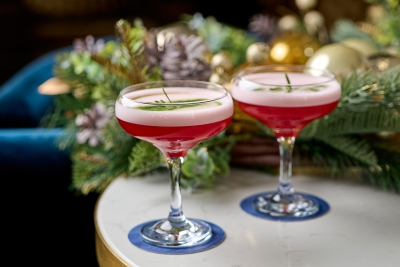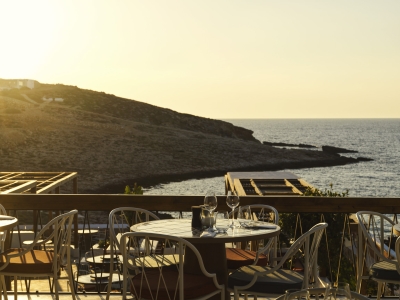Christmas and New Year’s may be over for another year, but that doesn’t mean we need to put a cork in the bubbles just yet! We enlisted the help of Melissa Brauer, The Prosecco Queen, to help us understand the array of bubbles available for your wedding day in “Bubbles Decoded: The Difference Between Sparkling Wines & Champagne” for our wedding day.
Image: Corinna & Dylan Photography
Love bubbles but don’t know the difference between Prosecco and Cava? How about Champagne and Cremant? With the meteoric rise in popularity of sparkling wine the world over, there’s naturally bound to be a bit of confusion around what’s what. Luckily, I teach people about wine for a living, and bubbles are my FAVOURITE topic! So let’s dive right in, shall we?
All sparkling wines start their life as still wine. By this we mean we take grape juice and add some yeast to start a fermentation with the sugar in the juice, which will then produce alcohol. This is essentially how most wines are made. A still wine at this point will then be either put in oak or stainless steel and the winemaker will decide when they want to bottle it based on the characteristics they are looking, for which will develop as time goes on.
Sparkling wine needs to have its bubbles put into it somehow. We call this the secondary ferment, where some more yeast is added, to create Co2 (carbon dioxide), ie bubbles of air. Which wine you are making depends on how these bubbles will get into the wine.
Image: Muse Photography
Prosecco
Prosecco is an Italian sparkling wine, made with the Prosecco (Glera) grape. It’s from North East Italy (north of Venice, into the UNESCO World Heritage site of the Prosecco Hills) and the hallmark notes of Prosecco are crisp apple, pear, lemon sherbert, and often hints of almond. It’s a wine that’s made fresh, to be drunk young and rarely aged. Prosecco is made in highly pressurised stainless steel tanks, the secondary ferment takes place in the tank, the bubbles are created, and the Prosecco can be filtered (the leftover yeast cells, called lees, are removed) and bottled after just 3 months (although many are bottled much later than this to let even more of the grape’s characters shine through in the wine).
The grape itself is quite hardy, easy to grow, often yielding larger crops, ie more grape juice per harvest, and since it can be in the bottle fairly quickly compared to other sparkling wines, this helps keep the cost down for consumers.
Image: Daniel Chafer
Champagne
Champagne, on the other hand, is made with a mixture of Chardonnay, Pinot Noir, and often Pinot Meunier grapes. Within the Champagne region in France where this style originates, some vineyards are better suited to a wine that’s Chardonnay dominant ie it will include 60% Chardonnay, 40% Pinot Noir, and others feature Pinot Noir as the dominant grape.
Chardonnay is much easier to grow and produces greater yields, whereas Pinot Noir is notoriously difficult to grow, has smaller berries, and some years the weather can wipe out a whole Pinot Noir harvest, meaning there is no choice but to make the Champagne without it. A Champagne that only contains Chardonnay is called Blanc de Blancs (white of whites).
Images: EVKA
Champagne is produced according to very strict rules, and the secondary ferment always takes place in the bottle, where the leftover yeast cells (the lees) sit within the wine, for a minimum of 15 months. This is what gives Champagne those toasty brioche notes, and the longer the wine sits with the lees, the more pronounced these notes can become. The champagne sits on a rack, on an angle upside down, and the sediment sits at the neck of the bottle. When it’s time to remove the lees (called disgorging) the necks of the bottles are placed in a freezing liquid, causing the lees to form a solid ‘plug’ which is then expelled from the bottle thanks to the pressure build-up from the bubbles. Then it’s time for dosage, where a mixture of wine and sugar called liqueur d’expédition is added. This adjusts sweetness levels and tops up the bottle. The bottle is then corked, secured with a wire cage, et voila! Champagne!
Image: Candice Campbell Photography
Cremant
Oh and Cremant? I’ll let you in on a little secret – this refers to wines made in France in the style of Champagne, just not in the Champagne region. Happily, Cremant is produced in some incredible wine-producing areas, such as Alsace, Limoux, Bourgogne, Loire, Bordeaux, etc so the quality can be fabulous (and more affordable if you’re looking for delicious French bubbles on a bit of a budget!)
Cava
Cava is essentially the Spanish version of Champagne, and Franciacorta is the Italian version. Australian Sparkling is also made in this same method – historically referred to as Method Champenoise, but now known as Method Traditionelle for wines made outside of the Champagne region.
All this talk of bubbles is making me thirsty – it’s time to pop a cork! Cin cin!
Image: Marie-Luise Weddings
About The Prosecco Queen: Prosecco is the world’s favourite yet mostly misunderstood sparkling wine! Join me to learn more! To keep up to date with my events and masterclasses follow me on Facebook and Instagram
















Join the conversation